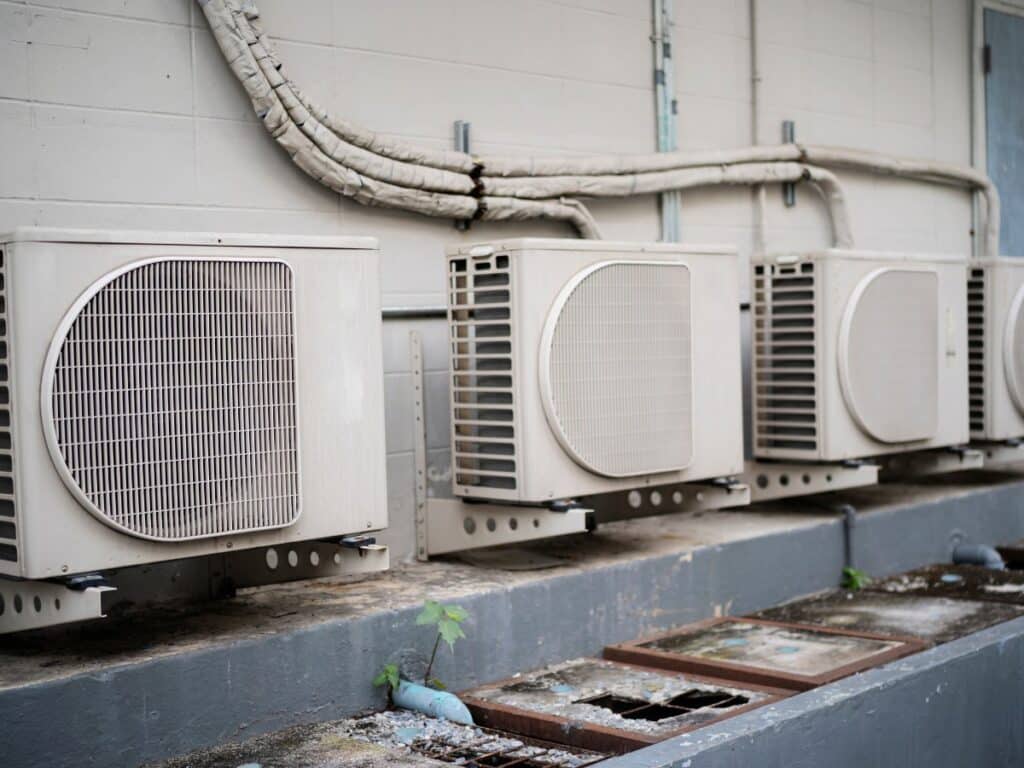A condenser is a key component of an air conditioning or heat pump system, responsible for transferring heat from inside a building to the outside environment. It plays a crucial role in the refrigeration cycle, allowing the refrigerant to change from a high-pressure gas to a high-pressure liquid state. This process is essential for cooling and dehumidifying indoor air.
The condenser unit comprises several components, including a condenser coil, a compressor, and a fan. The condenser coil is where heat exchange occurs, with the refrigerant releasing heat as it condenses from a gas to a liquid. The compressor compresses the refrigerant, increasing its pressure and temperature. The condenser fan helps dissipate the heat from the coil, ensuring efficient heat transfer.
Understanding how a condenser works and its role in the HVAC system is essential for homeowners to correctly maintain and troubleshoot their cooling systems. Regular maintenance and cleaning of the condenser coil and prompt repairs, when issues arise, can help ensure optimal performance and energy efficiency. Homeowners can enjoy comfortable indoor temperatures and lower energy bills by taking care of the condenser.
Understanding Condensers in Different Systems
Condensers are present in various systems, including air conditioning and refrigeration systems. In an air conditioning system, the condenser converts the refrigerant gas from the evaporator coil into a liquid state.
This liquid refrigerant then flows to the indoor evaporator coil, where it absorbs heat from the indoor air and provides cooling. In a refrigeration system, the condenser functions similarly, except that it removes heat from the refrigerated space and releases it outside, ensuring the proper functioning of the cooling system.
In both systems, the condenser operates under high pressure to facilitate heat transfer. It is important to note that the condenser in an air conditioning system is separate from the condenser in a vehicle’s engine radiator. While they perform similar heat dissipation functions, their designs and configurations differ.
Fundamentals of a Condenser’s Operation
The operation of a condenser involves heat exchange. The condenser coil, located in the outdoor unit of an air conditioning system, is designed to facilitate heat transfer from the refrigerant to the surrounding air. As the high-pressure refrigerant gas passes through the condenser coil, the heat it carries is released to the outside environment.
Understanding the differences between air conditioning and refrigeration condensers can help homeowners and HVAC industry professionals make informed decisions about system installation, maintenance, and troubleshooting.
Critical Components of a Condenser
Critical components of a condenser include the condenser coil, compressor, and fan. The condenser coil is responsible for heat exchange, facilitating heat transfer from the refrigerant to the surrounding air. The compressor is an electric pump pressuring the refrigerant, increasing its temperature and pressure.
The condenser fan helps dissipate the heat from the coil, ensuring efficient heat transfer. These components work together to maintain an air conditioning system’s cooling cycle. In a central AC unit, the condenser is located in the outdoor unit, where it plays a crucial role in heat transfer and cooling.
The Process of Heat Transfer
The condenser’s role in an air conditioning system involves the process of heat transfer. As the refrigerant flows through the condenser coil, it releases heat to the surrounding air. This heat transfer occurs by dissipating the heat from the refrigerant to the outside environment. With the help of the condenser fan, the condenser coil facilitates this heat exchange process.
The outdoor air passes over the condenser coil, absorbing the heat from the refrigerant and cooling it. This continuous heat transfer process allows the refrigerant to condense into a liquid state, ready to be moved back to the indoor unit to absorb heat from the indoor air. The condenser’s efficient heat transfer ensures excellent air production in the indoor unit.
Common Issues and Solutions for Condensers
Like any other component, condensers can experience issues that impact their performance. Some common problems include clogged condenser coils, which can restrict and decrease cooling efficiency.
This can lead to high energy bills as the AC unit has to work harder to cool the space. Unusual noises from the condenser unit can also indicate a problem, such as a malfunctioning condenser fan or compressor. Prompt maintenance and repairs are crucial in addressing these issues and ensuring the condenser operates efficiently.
Identifying Common Condenser Problems
Identifying common condenser problems is essential for maintaining the efficiency of the HVAC system. Some signs of condenser issues include a lack of cool air from the AC unit, which can indicate a problem with the condenser’s ability to remove heat. Another common issue is restricting refrigerant flow, which can cause clogged condenser coils or a refrigerant leak.
This can decrease cooling efficiency. Additionally, if the refrigerant remains in a gaseous state instead of condensing into a liquid, it can result in reduced cooling capacity. Regular maintenance and inspections can help identify and resolve these common condenser problems, ensuring optimal performance and energy efficiency.

Professional Maintenance and When to Seek Help
While homeowners can perform basic maintenance tasks, comprehensive maintenance and repairs require professional attention. HVAC technicians have the expertise and tools to inspect and service the condenser unit, ensuring its optimal performance. Regular professional maintenance can help identify any issues with the condenser and address them promptly.
Homeowners should seek professional help if they notice any significant drop in cooling efficiency, unusual noises, or other signs of condenser problems. It is also important to schedule professional maintenance for window AC units, as they have unique maintenance requirements that professionals can address effectively.
Signs Your Condenser Needs Professional Attention
Several signs indicate that your condenser unit may need professional attention. A lack of airflow from the AC unit can indicate a problem with the condenser fan or a blockage in the condenser coil. High energy bills may also indicate that the condenser is not operating efficiently, causing the AC unit to work harder and consume more energy.
Another indication is hot gas being released from the condenser unit, which could indicate a problem with the condenser coil or compressor. If you notice any of these signs, it is essential to seek professional help to diagnose and resolve the issue to ensure the optimal performance of your condenser.
Enhancing Your Condenser’s Efficiency and Longevity
You can take several measures to enhance your condenser’s efficiency and longevity. Regular maintenance, such as cleaning the condenser coils and inspecting the fan, is essential to ensure optimal performance. Upgrading to more energy-efficient models or incorporating innovations in condenser technology can also improve efficiency.
From the fundamentals of operation to common issues and solutions, a well-maintained condenser can enhance cooling efficiency and longevity. Regular DIY maintenance and timely professional attention are crucial to avoiding costly problems. You can ensure your condenser operates smoothly by staying informed about the role of coils, fans, and heat transfer processes.
Remember, preventative measures and technological upgrades significantly maximize your condenser’s lifespan and energy efficiency. Stay proactive in caring for your condenser to enjoy consistent cooling comfort.

